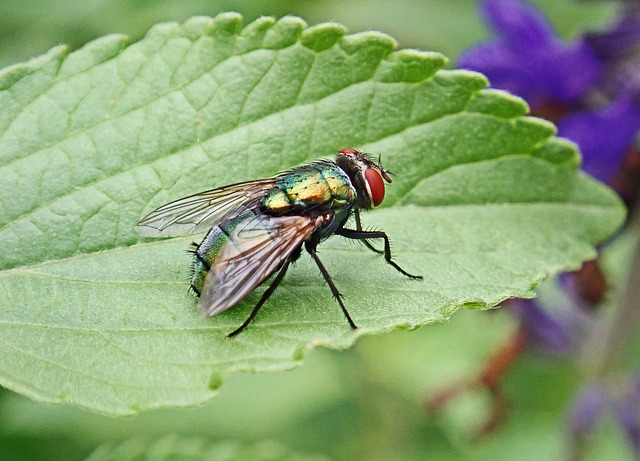Pest populations vary by region, but common intruders like ants, rodents, cockroaches, and insects can be mitigated through understanding their behaviors. Eco-friendly pest prevention strategies include maintaining cleanliness, regular trash removal, sealing outdoor areas, improving ventilation, reducing water leaks, using natural repellants, sealing entry points, and staying vigilant. These methods discourage pests without harmful chemicals, creating an environment that discourages invasions. Techniques involve excellent hygiene, natural repellents, planting pest-repelling herbs, introducing beneficial insects, sealing gaps, regular inspections, and prompt cleanup. For severe infestations in commercial areas, professional eco-friendly pest control experts use advanced techniques and sustainable methods for lasting solutions.
Keep your space pest-free with professional advice on effective, eco-friendly methods. This comprehensive guide delves into understanding common pests and their behaviors, exploring non-toxic solutions for prevention. Learn about creating physical barriers to deter intruders and when to call in the experts for professional intervention. Discover simple yet powerful steps to create a healthier, happier environment without compromising on sustainability.
Understanding Common Pests and Their Behavior
Pests can vary greatly from region to region, but common intruders include ants, rodents, cockroaches, and insects like mosquitos or spiders. Understanding their behaviors is half the battle in keeping your space pest-free. For instance, ants are drawn to sweet and sticky substances, so maintaining a clean kitchen with sealed containers is crucial. Rodents seek warmth and food, making regular trash removal and securing outdoor areas essential. Cockroaches hide in dark, humid places, so improving ventilation and reducing water leaks can deter them. Eco-friendly pest prevention methods focus on these behaviors, using natural repellants, sealing entry points, and maintaining cleanliness to discourage pests without harmful chemicals.
Regular inspections are also key. Checking for signs of infestation early can prevent small issues from becoming large problems. Look for unusual noises, droppings, or damaged property. By staying vigilant and addressing any issues promptly, you can create an environment that makes pests think twice before invading.
Eco-Friendly Methods for Pest Prevention
Many traditional pest control methods rely on toxic chemicals, which can be harmful to both people and the environment. An alternative approach is adopting eco-friendly strategies for pest prevention, ensuring a healthier living space while preserving nature’s balance. One effective method is maintaining excellent hygiene standards, eliminating potential food sources by regularly cleaning surfaces, storing foods in airtight containers, and promptly addressing any spills or crumbs. Additionally, natural repellents like essential oils (e.g., peppermint, citronella) can be used to deter pests without leaving hazardous residues.
Planting specific herbs and flowers known for their pest-repelling properties is another eco-friendly tactic. For instance, lavender, basil, and marigolds are natural enemies of various insects. Creating a diverse garden ecosystem with these plants can help keep pests at bay while promoting biodiversity. Moreover, introducing beneficial insects like ladybugs and lacewings into your space can effectively control populations of harmful pests without the need for synthetic chemicals.
Creating a Barrier: Effective Physical Controls
Creating a physical barrier is one of the most effective ways to prevent pests from entering your space. Eco-friendly pest prevention methods, such as sealing gaps and cracks around doors and windows, can significantly reduce the risk of infestation. Use weatherstripping, door sweeps, and window screens to create an impenetrable layer that keeps out common intruders like ants, spiders, and flies. Regular inspections should be conducted to identify any potential entry points and promptly address them before pests have a chance to establish a presence.
Additionally, maintaining a clean and clutter-free environment is crucial. Pests are attracted to food sources and hiding spots, so keeping your space tidy can deter them from taking up residence. Store food in airtight containers, regularly clean up spills and crumbs, and dispose of garbage promptly. By implementing these simple yet powerful eco-friendly pest prevention tactics, you can create a haven that is less welcoming to unwelcome visitors.
Professional Intervention: When to Call Experts
Pest infestations can quickly escalate, especially in commercial or densely populated areas. If over-the-counter methods fail or you suspect a severe infestation, it’s time to call in professionals. Eco-friendly pest prevention experts are equipped with advanced techniques and knowledge of local pests. They can identify the specific species causing trouble, trace their entry points, and implement tailored strategies to eradicate them effectively.
These professionals prioritize non-toxic, sustainable methods to ensure a safe environment for occupants and the surrounding ecosystem. By choosing eco-friendly pest control services, you contribute to long-term prevention while minimizing health risks and environmental impact. Their expertise lies in identifying and addressing the root causes of infestations, providing not just a quick fix but a lasting solution.
Maintaining a pest-free environment requires a comprehensive approach, combining understanding, prevention, and prompt action. By familiarizing yourself with common pests and their behaviors, you can implement effective eco-friendly methods to deter them naturally. Physical controls, such as sealing entry points, prove invaluable in creating barriers against invaders. However, for persistent or severe infestations, professional intervention is crucial. Remember, timely action and the right knowledge are key to keeping your space pest-free and maintaining a healthy, peaceful environment.
